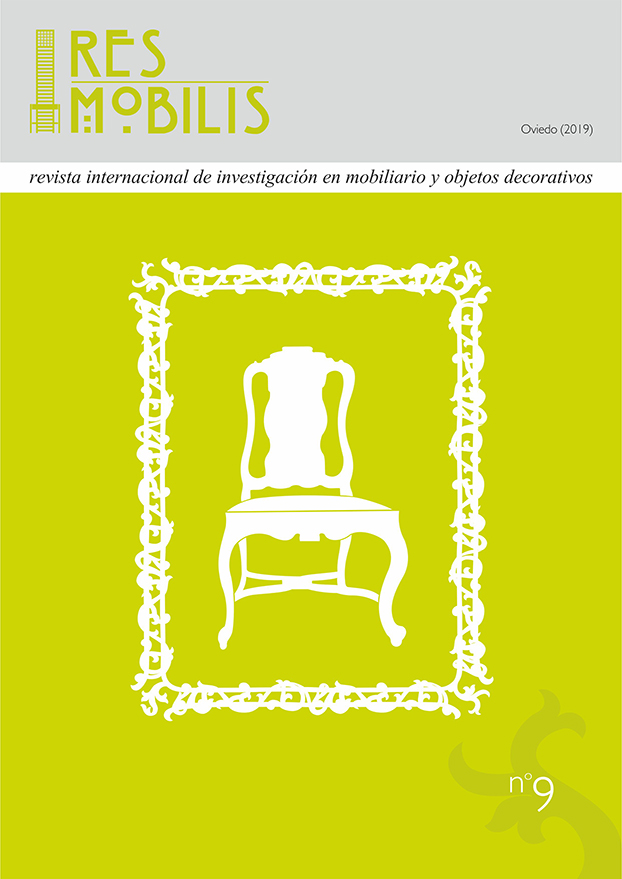Abstract
The Mexican artist Diego Rivera ordered the houses for Frida Kahlo and himself to the architect Juan O ́Gorman who makes a project completely modern, using a Lecorbusian language based on a radical style smooth walls, without any decoration.
Inside he follows the same principles and designs from the kitchen sink to the furniture; everything is done in a simple and minimalist way. What is surprising when by studying the furniture and decorative elements of Rivera ́s studio is the metal furniture that O ́Gorman designed, which has lasted until now, while the Muralist painter was buying traditional furniture, mostly made by Mexican craft worker. But above all it draws our attention, and it is at this point that we will focus on our research; those Rivera decoded in a way ragbag its study, with more than 140 large pieces, some of them more than two meters height, made in cardboard, that represent skeletons and Judas figures.
References
BARTRA, Eli, Frida Kahlo, mujer, ideología y arte, Barcelona, Icaria, Antrazyt, 2005
CORONEL RIVERA, Juan; RODRIGUEZ, Itzel e HIJAR, Alberto, Diego Rivera. Palabras ilustres 1921/1957, vol. II, México, RM VERLAG, 2008.
DE ESCOBAR, Fray Mathías: Americana Thebaida. Vitras Patrum de los religiosos ermitatios de nuestro padre San Agustín de la provincia de San Nicolás de Tolentino de Michoacán. Tomo I. Santa Cruz de Tenerife, Ediciones Idea, 2009.
GONZÁLEZ ZYMLA, Herbert, “La danza macabra”, en Revista Digital de Iconografía Medieval, vol. VI. VI, nº 11, 2014, pp. 23-51. https://www.ucm.es/bdiconografiamedieval/danzas-macabras. Consultada el 3-XI-2018.
GUARDUÑO PULIDO, Blanca. “Influencia del exvoto en la obra de Diego Rivera y Frida Kahlo y el arte contemporáneo”. En Fe, arte y cultura. El Santo Niño de Atocha. Exvotos, Consejo Nacional para la Cultura y las Artes, Instituto Nacional de Bellas Artes, Museo Casa Estudio Diego Rivera y Frida Kahlo, 2000.
GUZMÁN URBIOLA, Xavier, JIMÉNEZ Víctor y ITO, Toyo, Casa O'Gorman 1929 Distributed Art Pub Incorporated, 2014.
GUZMÁN URBIOLA, Xavier, Juan O´Gorman, sus primeras casas funcionales, México D.F. UNAM, 2007.
JEREZ GONZÁLEZ, Javier, “Juan O'Gorman. Formas de no ser arquitecto”, en Rita, nº4, México D.F. Octubre, 2015.
JIMÉNEZ, Víctor, Juan O´Gorman: vida y obra, México D.F. UNAM, 2004.
LOZANO, Luis Martín y CORONEL RIVERA, Juan, Diego Rivera. Obra Mural Completa, España, Tachen, 2017.
MORA, Teresa., & MOLINARI SORIANO, María Sara, Tradición e identidad: Semana Santa en Yanhuitlán, Oaxaca (1. ed). México, Plaza y Valdes, CONACULTA-INAH, 2002.
O’GORMAN, Juan, Autobiografía. México D.F. UNAM, Equilibrista, 2007.
RIUS, Posada el novio de la muerte, México, Grijalbo, 1997.
RIVERA MARÍN, Guadalupe, José Guadalupe Posada Visto Por Diego Rivera, México, Editorial Ink. EPub con DRM, 2013.
SÁNCHEZ GONZÁLEZ, Agustín, José Guadalupe Posada. Fantasías, calaveras y vida cotidiana, Ciudad de México, Editorial Turpin, 2014.
SOSA, Francisco, “Escalante, Constantino”, en Biografías de mexicanos distinguidos. México. Ed. Porrua. 1884, pp. 260-265.
TIBOL, Raquel, Frida Kahlo: una vida abierta, México, UNAM, 2002.
TIBOL, Raquel, Los murales de Diego Rivera México, RM VERLAG, 2001.
WESTHEIM, Paul, La calavera, México, Fondo de Cultura Económica, (1ª ed., México, 1953), 2013.

